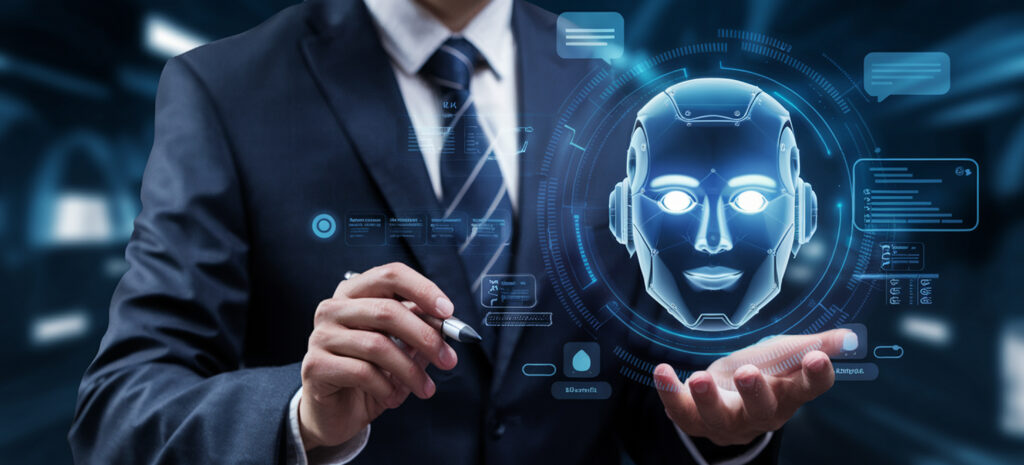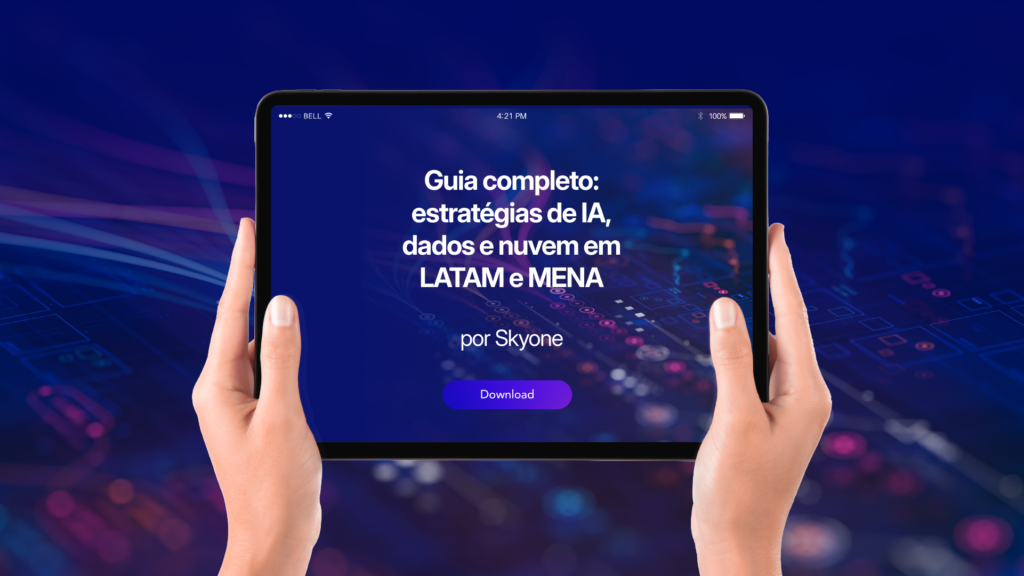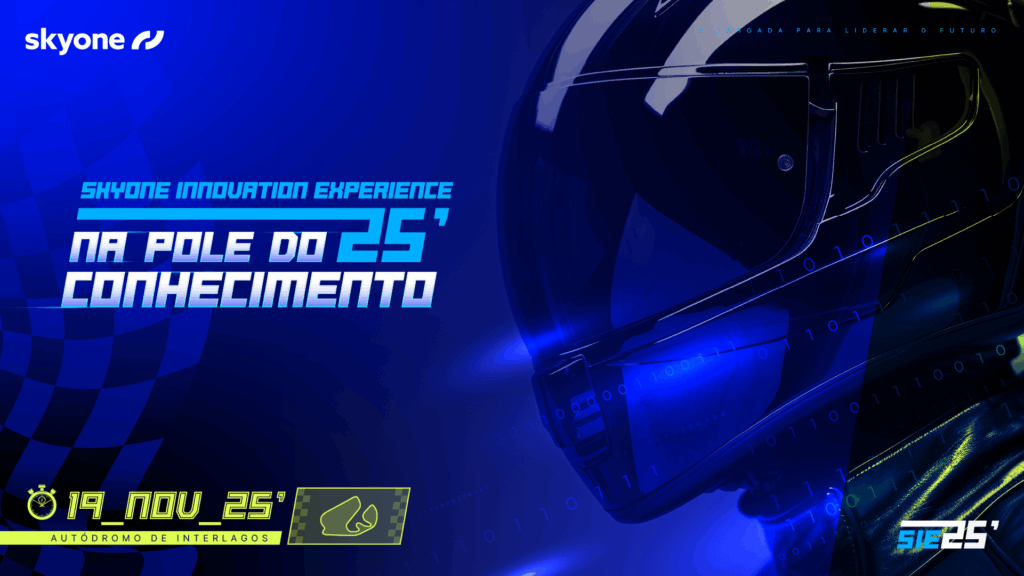Introduction
Would you trust an artificial intelligence (AI) to resolve a conflict between two systems that do not understand each other? This is a question that many companies are asking, and increasingly answering a "yes".
By 2024, a global survey by Pagerdty showed that 94% of organizations plan to adopt AI agent or autonomous agents, faster than traditional models of Generative AI . More than half of them already see this technology as a strategic priority. This indicates that we are facing a new stage of digital transformation, in which machine autonomy becomes an essential part of the operation.
It is inevitable : as systems multiply and data flows become more complex, conflicts between information, business rules and processes appear. Divergent information, fought decisions or integrations that do not efficiently communicate generate delays, rework and operational risks .
Given this, autonomous agents with AI emerge as an intelligent answer . Unlike traditional automations, these agents analyze context, interpret variables, and make decisions independently based on continuous learning.
In this article, we will explore how this technology has been used to resolve digital conflicts faster, accuracy and autonomy . Here, you will understand what autonomous agents are, how they work in practice, and how Skyone applies them to resolve conflicts with more agility and intelligence .
Good reading!
What are autonomous agents with AI?
The word “autonomous” carries weight. It suggests independence, decision making and responsibility. But in the universe of technology, what exactly does it mean to give autonomy to a system?
Autonomous AI agents are software that can act independently, making decisions based on dynamic contexts, defined objectives and previous learning. They are not limited to performing programmed commands: they interpret variables, evaluate scenarios and choose the best possible response in real time.
This logic marks an important turning point in the way we understand automation. If before the focus was on repetitive tasks efficiency, we now talk about applied intelligence to solve complex problems with more accurate and speed . And that changes everything.
The term may seem distant, but the examples are closer to what you imagine: from the virtual assistant that solves demands without depending on scripts to the logistics system that readjusts routes in front of unforeseen events. In all these cases, there is one point in common: the ability to act without waiting for orders .
Understanding what makes a truly autonomous agent is the first step in differentiating promise x real application. And for that, we need to know the different types of agents and how they operate with varying levels of intelligence and independence.
Let's go to them?
Types of autonomous agents with AI
Before we explore how these agents work in practice, it is important to understand that not all operate with the same level of intelligence or independence . Autonomy can vary greatly, depending on the ability to perceive the environment, interpret situations and make decisions in an adaptive way.
The most classic, yet very useful way of classifying these agents was proposed by Stuart Russell and Peter Norvig in the book “ Artificial Intelligence: Modern Approach ” , originally published in 1995. The work, constantly updated and widely used in universities and technology companies, defines the types of agents based on their degree of sophistication and autonomy . Even almost three decades later, this structure remains a solid reference for those seeking clarity and strategic vision about the role of AI in business.
That said, check out the main types of self -employed agents with AI:
- Simple reflex agents : react to direct stimuli with predefined actions. For example, a system that automatically responds to a keyword in an email . There is no analysis, just immediate response;
- Limited Memory Agents : Use recent data to make more informed decisions. A chatbot that remembers the last question asked to maintain the context of the conversation fits here;
- Objectives -based agents : make goals guided decisions. A logistics system that reorganizes deliveries to avoid delays act with this kind of logic, even if you need to change the original plan;
- Utility -based agents : Evaluate different options to choose the most advantageous. An agent of recommendation that considers customer history and conversion potential before suggesting an offer is a good example;
- Multiagent Systems (MAS) : They operate in network, with several agents interacting with each other, either to cooperate, compete or negotiate decisions. But it is the acronym for Multi-Agent Systems , or systems composed of multiple agents who, even with different objectives, act in a coordinated manner. This model is common on corporate platforms that integrate areas such as service, logistics and sales, seeking real -time optimized decisions.
These types are not rigid blocks. The same agent can evolve over time, gaining complexity as it collects data, interacts with users and learns from their own decisions. Thus, understanding these categories is important to recognize how and where autonomous AI can be applied safely and impact.
In the next section, let's know how these agents operate: how they perceive the environment, interpret variables, and make decisions that once demanded human intervention.
How they work: from input to decision
Now that we understand the main types of agents, it's time to open the "black box" and look inside: How, after all, they operate?
At first glance, the operation of an autonomous agent with AI may seem complex, but proves to be more accessible when divided into three fundamental steps : to perceive, interpret and act.
These steps form the life cycle of an autonomous decision . It is from them that an agent can turn data into decisions, often with the agility and accuracy that the human routine could not keep on scale.
Let's look at each of these phases more closely.
Perception
It all starts with data entry . Autonomous agents are “sensitive” to the environment, that is, capture information that comes from different channels - APIs, sensors, legacy systems, cloud integrations and/or native connectors, such as those used in Skyone Studio .
This step is key, because without reliable and well -connected data, there is no way to make smart decisions. The quality of perception directly impacts agent performance , which is why data architecture and integration points are so relevant in the design of these systems.
Interpretation with AI
Once the data is collected now, the agent needs to understand it . This is where artificial intelligence comes in, especially plugable models such as LARGE ( LARGE LANGUAGE MODELS ), which help the agent interpret context, detect conflicts and evaluate variables.
Instead of following fixed rules, the agent is able to compare scenarios, analyze patterns, consider exceptions, and even mediate decisions based on multiple sources. This is what differentiates an autonomous agent from a traditional automation : it not only performs, but interprets.
Decision and Action
And with the data understood, it's time for the agent to choose the best way forward . It can correct a divergence between systems, prioritize a specific flow, alert a team, or simply take action on your own. Of course, always guided by clear and ideally auditable goals.
At the end of this process, everything the agent has done can and should be registered. This traceability allows it to evolve based on its own results , creating a cycle of continuous improvement. A curiosity: At Skyone Studio , for example, logs lakehouse architecture help maintain this rich and affordable history for future reevaluation.
After understanding the step by step of how an autonomous agent realizes, interprets and decides, now it's time to get out of theory . In the next section, let's show how all this translates into real applications, and how these agents are already acting on scenarios where complexity requires faster, more accurate and intelligent answers.
Real Examples of Application
As sophisticated as the concepts behind AI are, it is in practical use that the value is proved. agents are already in action in various corporate contexts , often invisible, but acting at critical points to ensure fluidity, accuracy and operational continuity.
See some concrete examples:
- Customer service with multiple integrations : AI autonomous agents equipped with AI can access simultaneously different systems (such as CRM, order base and support center) to identify inconsistencies and resolve information conflicts.
If the status of a request diverges between platforms, the agent analyzes the history, defines the most reliable version and updates the records without the need for human scaling; - Automatic Fault Correction in Integration : In environments with many legacy systems, it is common for data to circulate with different formats.
An agent can act as a mediator: When it detects an incompatibility between systems, it identifies the origin of the problem, applies the necessary transformation and renamed the data in a standardized manner, maintaining active and reliable integration; - Reconciliation of Financial and Operational Data : Companies with multiple data sources face frequent differences in values and records.
Age agents can cross these bases, detect anomalies, and apply decision rules (such as prefering sources with a lower error rate) to suggest or execute corrections. This accelerates processes such as accounting closure and internal audits; - Preventive monitoring and failure auto resolution : Agents can track logs and events in real time to identify standards that precede technical failures. By recognizing these signs, they can trigger preventive measures, such as rebooting, isolates processes, or warning teams with accurate diagnoses. This avoids interruptions even before the problem manifests itself on the front end .
These examples show that autonomous agents are already helping companies to resolve conflicts even before they see problems with accuracy, agility and scale. But no technological autonomy is neutral. For these systems to act with real intelligence, you must ensure that they operate responsibly.
Therefore, we enter the pillars that support this confidence: ethics, security and governance. Because technology without discretion does not solve, but compromises!
What is at stake: ethics, security and confidence
Giving autonomy to a system is, first of all, delegating decisions, and that changes everything.
According to a Sailpoint , done with 353 IT professionals, 98% of organizations plan to expand the use of AI agents in the next 12 months, but 96% already see these agents as a growing threat to security . In addition, 80% reported unwanted behaviors, such as unauthorized access and improper data sharing, and less than half have formal governance policies to deal with it.
These data make it clear that autonomy without structure creates risk . Thus, it is essential to ensure clarity about who is responsible for each decision, protecting sensitive data and auditing the entire process. Otherwise, an agent who acts well today can become a problem tomorrow.
In addition, with agents connected to multiple systems, the attack surface grows . Safety requires flow segregation, access control and continuous monitoring - not as a final step, but incorporated into design from the outset.
At Skyone , we adopted the principle of "trusting safely." Therefore, our Skyone Studio comes equipped with logs , granular permissions and governance control that supports both ethics and technical operation.
Next, we want to show you how these elements come together in practice when we orchestrated agents with AI within Skyone Studio , from construction to continuous evolution!
How does Skyone orchestra agents with AI?
Autonomy, by itself, does not solve. What transforms autonomous agents into real solutions is orchestration, ie the ability to coordinate logic, data and decisions in a safe, auditable and adaptable environment .
This is what Skyone Studio makes it possible: Creating agents that not only execute commands but understand context, react to exceptions and evolve based on their own learnings. All of this without requiring a technical revolution on the client, but connecting the new to the legacy with fluidity .
Check out how we do this in practice.
Creation of agents at Skyone Studio with conditional flows
In Skyone Studio , agents are not programmed line to line, but designed. Logic is visually constructed through conditional flows that draw the agent's behavior against events, rules and exceptions.
This allows you to map complex scenarios , such as a divergence between billing and inventory data, and configuring specific actions : from reconciling data automatically to human approval. That is, it is the agent as an intelligent mediator, not passive executor.
Integration with data via native connectors
Acting with autonomy requires context, and context requires data. Therefore, Skyone Studio offers native connectors for agents to access, in real time, different systems such as ERPs, CRMS, Databases and Owner APIs.
These integrations not only feed the logic of the agent. They also allow him to detect conflicts between sources, recurring patterns make decisions based on what is really happening, not just what was predicted.
Continuous evolution with centralized logs lakehouse
A real intelligent agent is not born ready: he learns. Therefore, all he does is recorded on logs lakehouse architecture . This creates a reliable trail to understand the past, analyze the present, and plan the future .
This decision repository is what enables the performance of agents, training models based on real situations, and refine the rules with evidence, non -achievements. It is a cycle of continuous evolution based on data , as every good decision should be.
If you want to understand how these agents can act in your scenario, talk to one of our experts , and find out how Skyone Studio connects logic, data and went to turn conflicts into smart decisions!
Conclusion
Operational conflicts are not always visible, but their effects are felt every day : data that do not beat, integrations they lock, decisions that take longer than they should. In a scenario where complexity grows faster than the human ability to follow, relying on systems that resolve impasses autonomously is an increasingly necessary response.
Throughout this content, we have seen that self -employed agents with IA represent more than advanced automation: they are a new logic of operation , capable of understanding context, making decisions and evolving based on their own learning. We explore their types, how they work, where they already work, and how Skyone orchestra all of this safely and intelligence.
More than a trend, this technology responds to real demand for more fluidity, reliability and scale . And perhaps your operation is ready to take this next step, with intelligence in the center of everything.
If you want to continue browsing other topics that connect technology and business with depth and clarity, explore the Skyone Blog ! There is always something new around here that can turn your way of looking at your business operation.
FAQ: Frequent Questions about AI in autonomous agents
As interest in artificial intelligence (AI) -based solutions grows, doubts also increase doubts about how this technology works, especially when we talk about agents who make decisions alone.
To help below we have gathered answers to some of the most common questions about AI autonomous agents, their uses and implications.
What is the difference between automation and autonomous agent?
Automation performs scheduled tasks, with no space for interpretation. An automation robot repeats instructions without considering changes in context. A self -employed agent is designed to evaluate scenarios, adapt your answer, and even learn from previous decisions. It not only follows rules: he chooses which rule to apply or when creating a new one.
Is it safe to leave decisions in the hands of autonomous agents with AI?
It can be, as long as there is governance. Autonomous agents should operate with traceability, well -defined limits and audit capacity. Safety is in drawing: well -structured flows, permissions control and constant monitoring. When well implemented, these agents reduce operational risks instead of creating them.
Can medium companies also use autonomous agents with AI?
Yes, and are often the ones that benefit the most. Autonomous agents help average companies to do more with less: avoiding rework, integrating legacy systems and keeping operations flowing with less human intervention dependence. With accessible and flexible platforms, such as Skyone Studio , this technology is within the reach of those who want to grow with intelligence and control.





